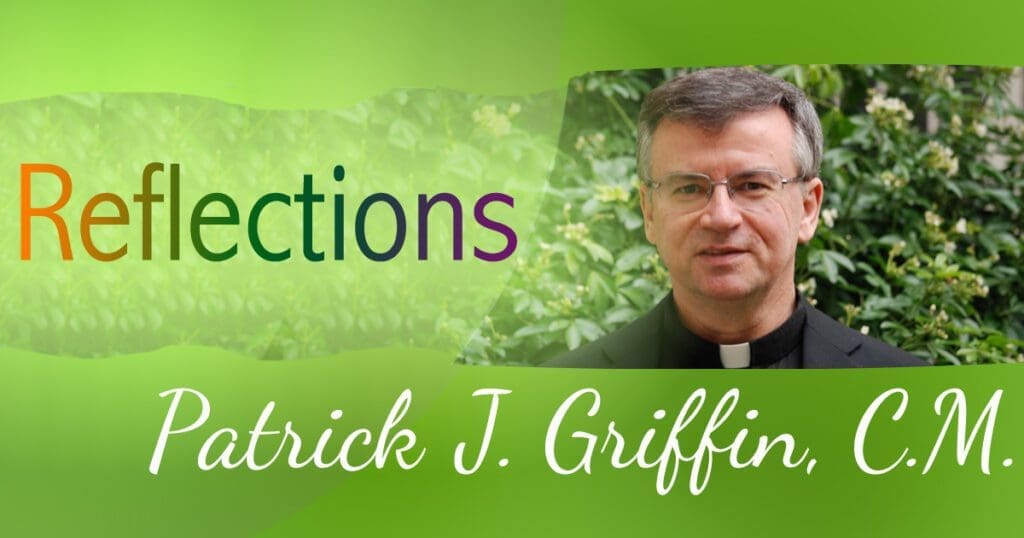On the campus of both Niagara University and St. John’s University, identical life-size metal statues of the Blessed Mother stand outside in grassed areas. I really like these statues. I presume that this work of art has a name, but I do not know what it is. I call it “the Visitation.” The statue portrays a young Mary and one can perceive a small belt across her chest that I interpret as a bag for her journey. I imagine her on the way to help her aged cousin with her pregnancy. Mary would probably have joined a group that was heading towards Jerusalem for a pilgrimage—some 60 miles. I wonder what she thought about along the way.

Only a short time past her conversation with Gabriel, one can imagine Mary still processing her experience and what it all meant:
During those days Mary set out and traveled to the hill country in haste to a town of Judah. . . (Lk 1:39)
As she journeyed, she might have seen her world with fresh eyes.
Perhaps, Mary pondered anew how great and caring God really is. She knew the status of women in her society, yet the Great God asked her to be the mother of the anointed one. And. perhaps her journey to the side of her cousin Elizabeth offered her the opportunity to reflect once more upon the status of her people. She saw the poor scattered along the road and perhaps a leper forced off to the curb. She saw the Roman soldiers and the way in which the Jews were treated and mistreated. With her experience of the Lord, however, there was no bullying, no overwhelming displays to compromise her freedom; her dignity as a person shone forth in her invitation and ability to say “Yes” freely to the Lord.
I wonder if the words and feelings of the Magnificat welled up within her and sought a context for relief as she journeyed along. What would she say to Elizabeth? What would Elizabeth say to her?
The encounter of Mary and Elizabeth at the Visitation offers a wondrous balance of support. Elizabeth congratulates Mary:
“Most blessed are you among women, and blessed is the fruit of your womb. . . .
Blessed are you who believed that what was spoken to you by the Lord would be
fulfilled.” (Lk 1:42-45)
And perhaps this affirmation and these words prompt Mary to burst into her Magnificat (Lk 1:46-48)
“My soul proclaims the greatness of the Lord;
my spirit rejoices in God my savior.
For he has looked upon his handmaid’s lowliness;
behold, from now on will all ages call me blessed.”
In some ways, the Visitation provides a completeness to Mary’s experience and allows her to express what she was feeling. What a blessing for her and a lesson for us.







Thank you very much, Fr. Griffin, for this reflection that I find to be quite moving. I’m particularly touched by:
“With her experience of the Lord, however, there was no bullying, no overwhelming displays to compromise her freedom; her dignity as a person shone forth in her invitation and ability to say “Yes” freely to the Lord.”
For this confirms my belief that with or in the Lord, ideals are facts, utopia is reality. In this regard, please allow me to cite someone commenting on the gospel reading for Corpus Christi (Mk 14, 12-16. 22-26). He says:
“We know that when we eat the bread and drink the wine we enter into communion with what seems to be impossible among us, but which is absolutely real in God. Among us ‘utopia’ has become synonymous with ‘impossible’. But in God utopia is reality. And if one finds the phrase ‘in God’ seems hard to understand, one can replace it with ‘Thanks to God.’ Still and all, and for now, we should head out to the Mount of Olives.”